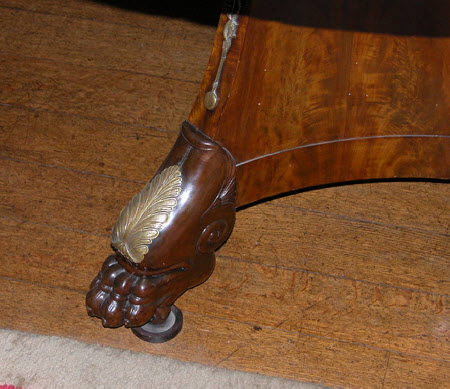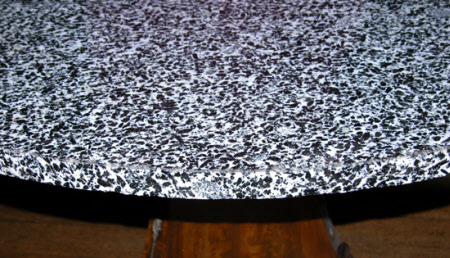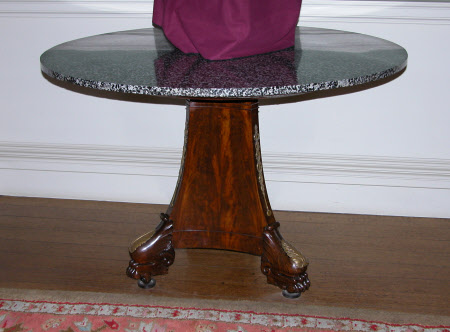Centre table
Pierre Antoine Bellangé (1757 - 1827)
Category
Furniture
Date
1810 - 1820
Materials
Mahogany, ormolu, marble
Measurements
81 cm x120 cm
Place of origin
France
Order this imageCollection
Ickworth, Suffolk
NT 850027
Summary
A pair of mahogany, granite and ormolu mounted pedestal centre tables or guéridon, attributed to Pierre-Antoine Bellangé (1758-1827), Paris, circa 1815 The circular granito del foro top raised on a concave friform tapered pedestal with applied staff and garland cast mounts and stylized scrolled lions paw feet with applied anthemion cast mounts. Stamped by the maker on the table frame (?)
Full description
Pierre-Antoine Bellangé (1757–1827) was a French ébéniste working in Paris. Bellangé held an eminent position among the representatives of the decorative arts at the beginning of the nineteenth century. He gained his master craftsman title on October 24, 1788. Bellangé was designated several times as arbitrator or expert in trials brought before the tribunal of commerce. At the end of 1811, he became the "Imperial Furniture Warehouse." Suites of furniture by Bellangé were provided for many European courts including the Netherlands, Sweden, and Denmark. Bellange's work is often classified as Empire Style a reference to the First French Empire under Napoleon I. Motifs included swans favored by Napoleon's first wife Joséphine de Beauharnais, honeybees (a symbol for Napoleon), laurel branches, laurel wreaths, and Roman eagles. Bellangé's furniture often showcases the dense grain of mahogony, combined with gilded bronze or carved and gilded relief decoration. see Cordier, Sylvain 'La famille Bellangé, ébénistes à Paris de la Révolution au Second Empire' (James Weedon 2017)
Makers and roles
Pierre Antoine Bellangé (1757 - 1827), cabinet maker
References
Cordier, Sylvain - 'La famille Bellangé, ébénistes à Paris de la Révolution au Second Empire' 2009



